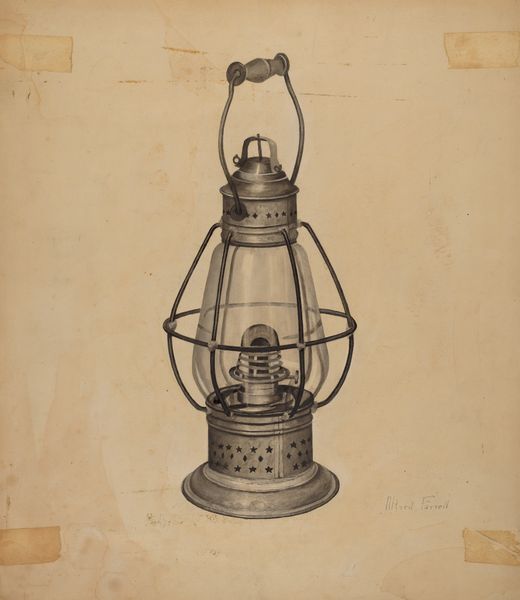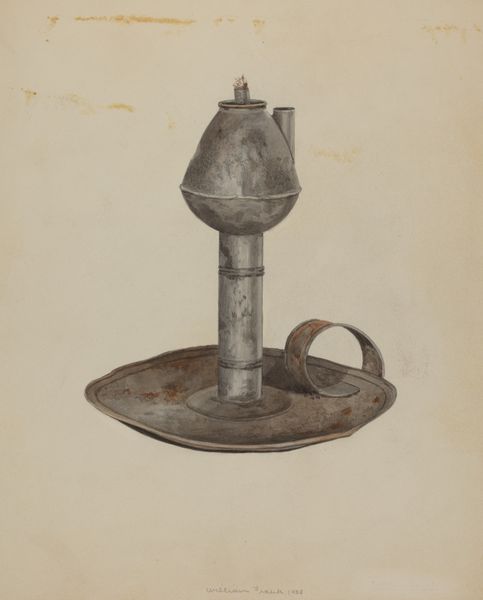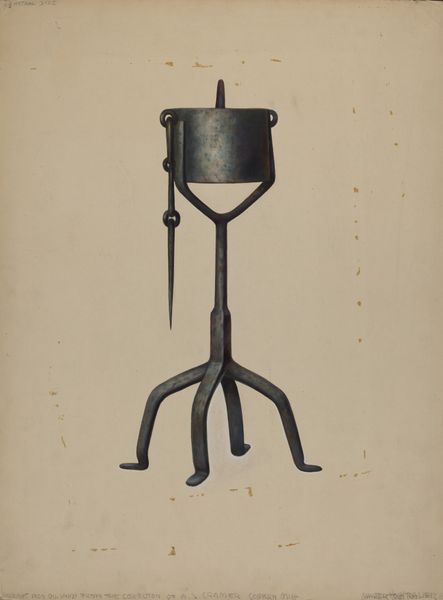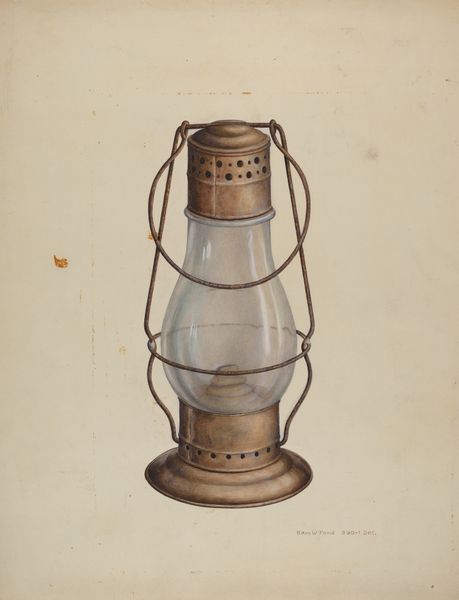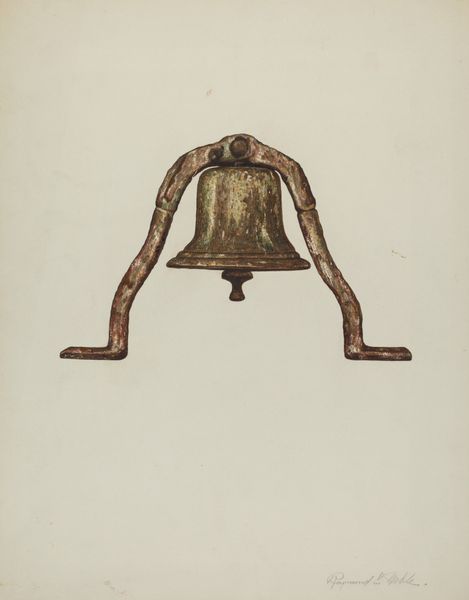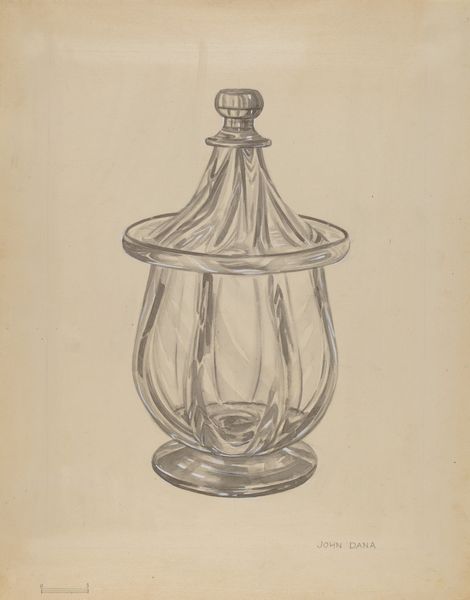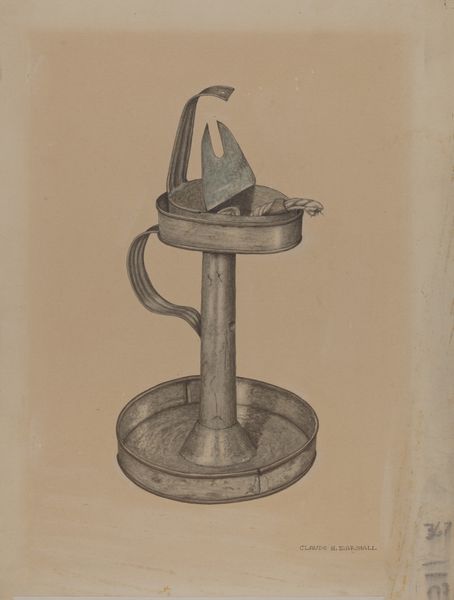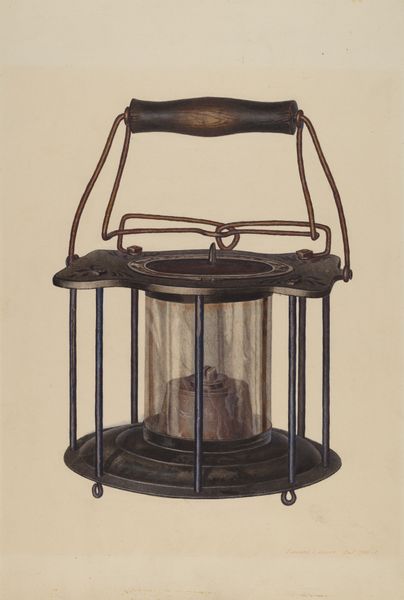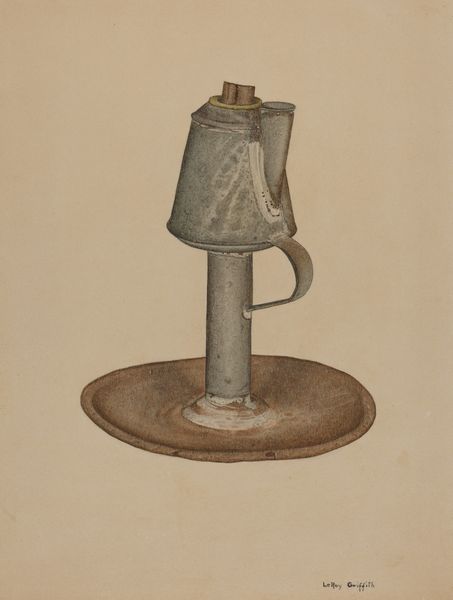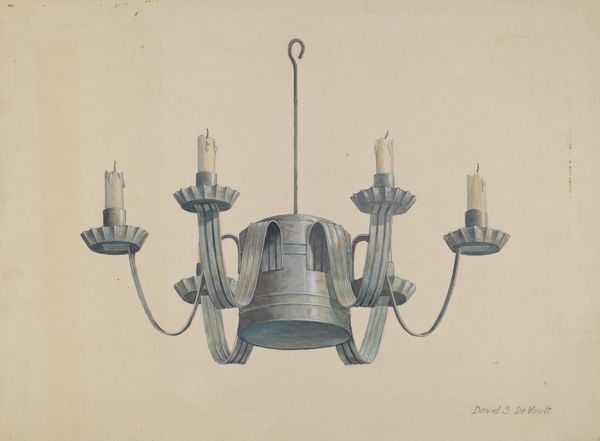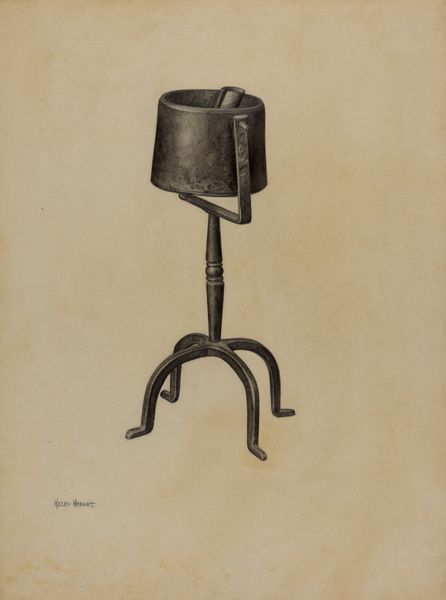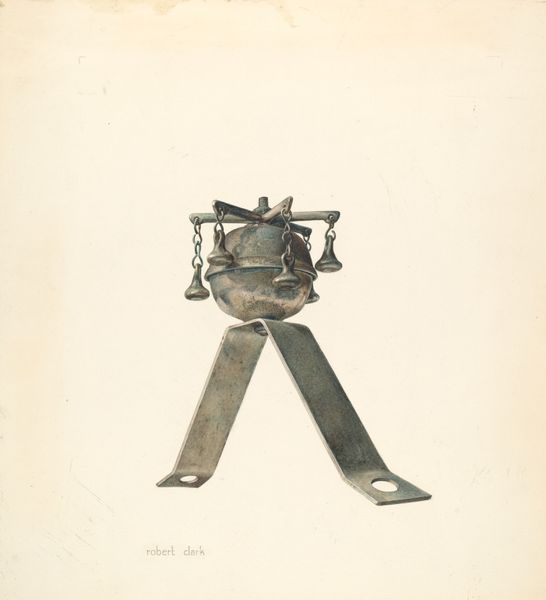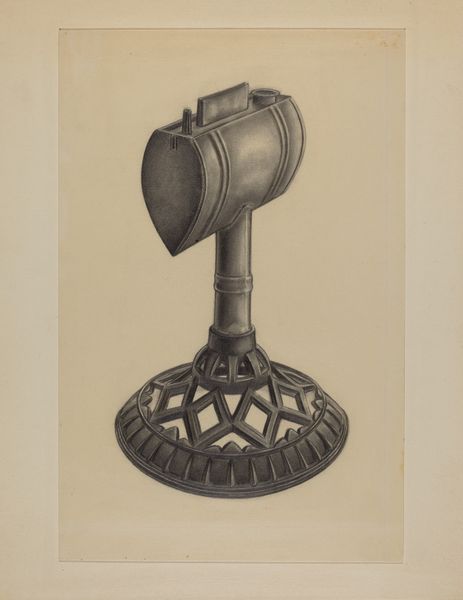
drawing, metal, pencil
#
drawing
#
metal
#
pencil sketch
#
pencil drawing
#
geometric
#
pencil
#
academic-art
Dimensions: overall: 34.9 x 26.8 cm (13 3/4 x 10 9/16 in.)
Copyright: National Gallery of Art: CC0 1.0
Editor: This intriguing drawing by Elmer R. Kottcamp, titled "Pa. German Chandelier," was created between 1935 and 1942 using pencil and what seems to be a rendering of metal. What stands out to me is the geometric yet handcrafted feel of it. What can you tell me about this piece? Curator: Well, let’s consider the materials. Kottcamp chose pencil, a humble and readily available medium. What does that suggest about his intentions, or the accessibility of art during that period? Think about the social context of the 1930s and 40s – the Depression, war – and how that might influence the availability of more expensive art supplies, pushing artists toward simpler means. Editor: So, the choice of pencil isn't just about aesthetics; it's also tied to the economic realities of the time? I also noticed the title is ‘Pa. German Chandelier’, making it a manufactured object drawn with such craft! Curator: Precisely! And ‘craft’ is key here. This isn’t just a drawing *of* a chandelier; it's a record of a specific type of chandelier – one rooted in Pennsylvania German craftsmanship. Who made these chandeliers, and how were they distributed? Those questions open up an entire realm of inquiry. How were these metal objects actually manufactured, distributed, consumed, or purposed, and how might the artist's choice of materials, such as simple graphite or pencil and paper, play a role? Editor: That’s fascinating! I was focusing on the artistic skill, but understanding the object’s origin and the artist's material choices adds so much depth. Curator: Exactly! The means of production and making art matter greatly here. Examining the labor involved in both the original chandelier *and* Kottcamp's drawing forces us to reconsider the artificial boundaries we often impose between "high art" and "craft." Editor: I’ll definitely think about art-making from this angle moving forward. Curator: Remember to keep asking what art represents or conveys *socially* and *materially*.
Comments
No comments
Be the first to comment and join the conversation on the ultimate creative platform.
